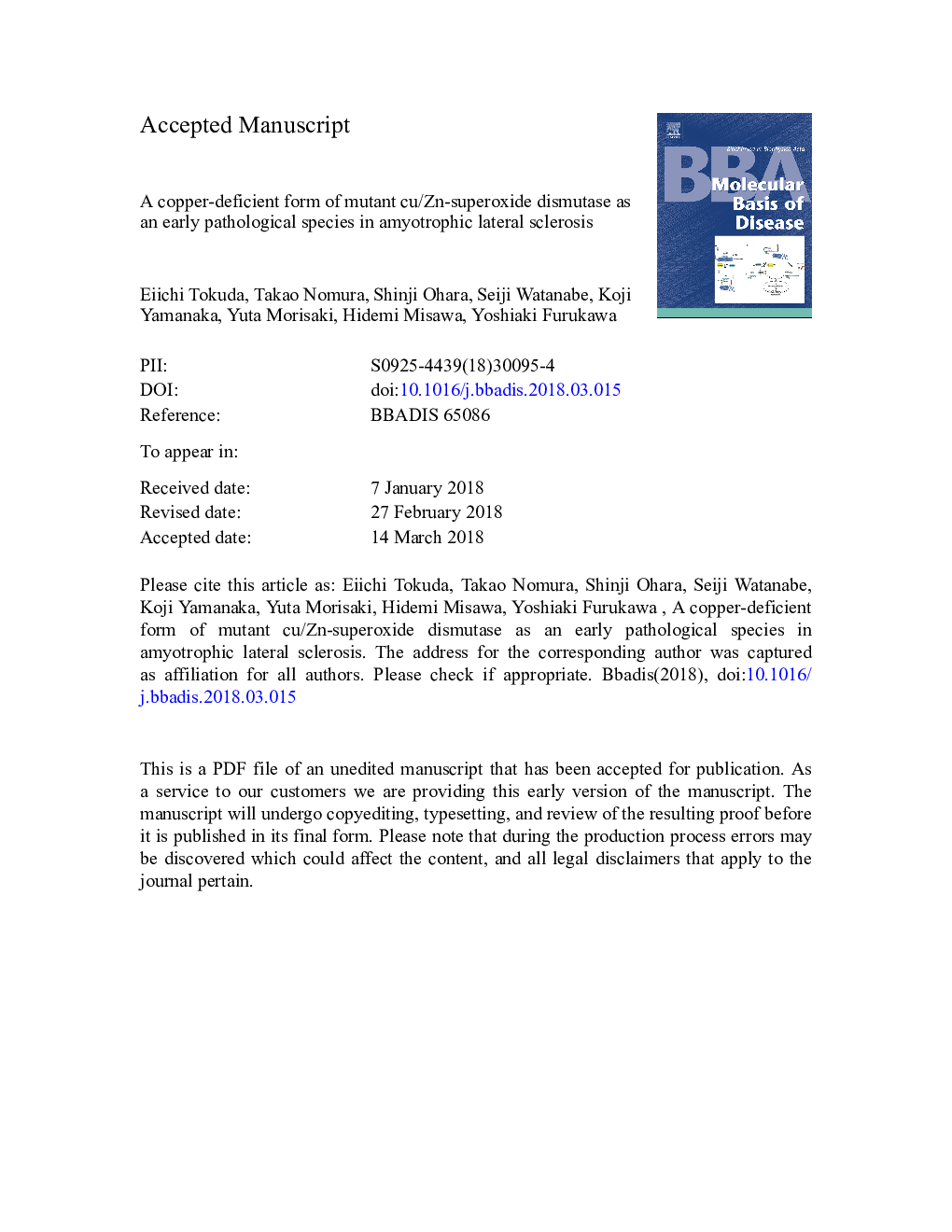| Article ID | Journal | Published Year | Pages | File Type |
|---|---|---|---|---|
| 8258435 | Biochimica et Biophysica Acta (BBA) - Molecular Basis of Disease | 2018 | 47 Pages |
Abstract
Dominant mutations in the gene encoding copper and zinc-binding superoxide dismutase (SOD1) cause amyotrophic lateral sclerosis (ALS). Abnormal accumulation of misfolded SOD1 proteins in spinal motoneurons is a major pathological hallmark in SOD1-related ALS. Dissociation of copper and/or zinc ions from SOD1 has been shown to trigger the protein aggregation/oligomerization in vitro, but the pathological contribution of such metal dissociation to the SOD1 misfolding still remains obscure. Here, we tested the relevance of the metal-deficient SOD1 in the misfolding in vivo by developing a novel antibody (anti-apoSOD), which exclusively recognized mutant SOD1 deficient in metal ions at its copper-binding site. Notably, anti-apoSOD-reactive species were detected specifically in the spinal cords of the ALS model mice only at their early pre-symptomatic stages but not at the end stage of the disease. The cerebrospinal fluid as well as the spinal cord homogenate of one SOD1-ALS patient also contained the anti-apoSOD-reactive species. Our results thus suggest that metal-deficiency in mutant SOD1 at its copper-binding site is one of the earliest pathological features in SOD1-ALS.
Related Topics
Life Sciences
Biochemistry, Genetics and Molecular Biology
Ageing
Authors
Eiichi Tokuda, Takao Nomura, Shinji Ohara, Seiji Watanabe, Koji Yamanaka, Yuta Morisaki, Hidemi Misawa, Yoshiaki Furukawa,
